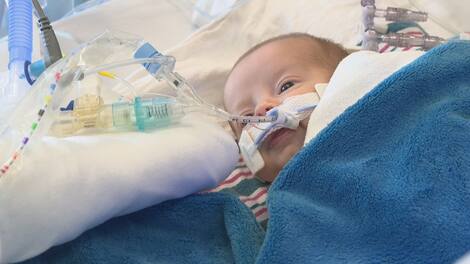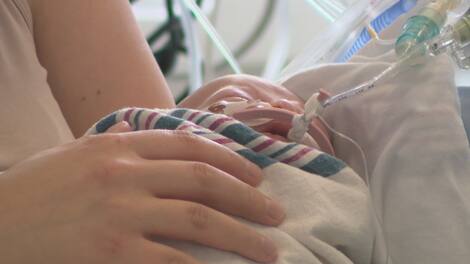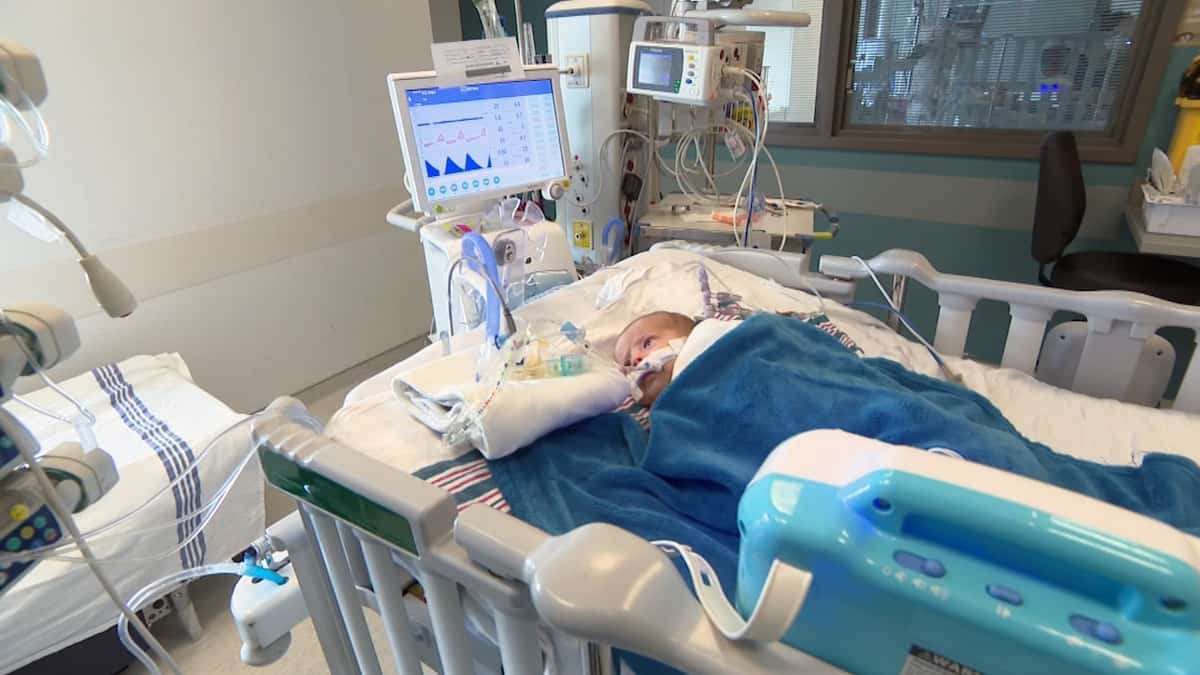Ludo, a 2-month-old infant, had been battling bronchiolitis caused by respiratory syncytial virus for two weeks.
• Read also: Bronchiolitis: After COVID, fear of rebound
“He started running out of his nose, and then after three days he started to become white, limp. He no longer had a tone. So, I consulted the emergency room in Val d’Or, and then after three days his condition deteriorated, so we were taken here, to Montreal, to the children, As his mother, Genevieve Lagoy says.

The infant is not the only one in this case. Doctors see an alarming increase in cases of respiratory syncytial virus (RSV) in children.
At Montreal Children’s Hospital, an infant with a respiratory virus occupies the majority of intensive care beds.
We have 11 patients out of 16 infected with respiratory viruses. These are patients who are undergoing mechanical ventilation and non-invasive care — we know CPAP and BiPAP — and some of them are undergoing intubation and ventilation,” explains Maryse Dagenais, chief nurse in intensive care at Montreal Children’s Hospital.
This increase in cases, which has been observed since August, is linked to the COVID-19 pandemic.
Because of the important health measures put in place to combat the epidemic, children and their mothers have gradually not been exposed to respiratory viruses like 90% of children under the age of two are usually.
When they get their first infection, this is where the virus is most likely to travel from the upper respiratory tract and into the lungs. Quebec has been the hardest hit so far, and it’s starting to show up in Ontario,” says Dr. Jesse Papenburg, an infectious disease specialist and microbiologist at Montreal Children’s Hospital.
Respiratory syncytial virus is generally detected in the same way as all other viruses.
Little Chloe, three and a half weeks old, contracted the virus from her siblings.
“She has two older brothers, so he might be among them. They were sick too, on the other hand, it was a little weaker,” said his mother, Marie-Christine Sear.

The parents were also very afraid for their newborn.
“There was general anesthesia done to check the vocal cords, in the throat, to see if anything else was damaged or, in fact, whether it was damaged. There were problems associated with all of that,” explains Chloe’s father, Jonathan Dobby.
At just one month old, Ofili, who was hospitalized at Montreal Children’s Hospital, contracted a respiratory virus from a family member.

“She had bronchiolitis. It was her sister who brought her home from nursery. So she had to be intubated fairly quickly and then we were taken here for more specialized care,” says her mother, Amelie Jane, who finds it very difficult not to Being able to take her daughter as she wanted.
Fortunately, deaths from respiratory syncytial virus are very rare.
With winter approaching and flu season, pediatric teams are still on the alert.
– According to information from Harold Gagné

“Subtly charming problem solver. Extreme tv enthusiast. Web scholar. Evil beer expert. Music nerd. Food junkie.”

